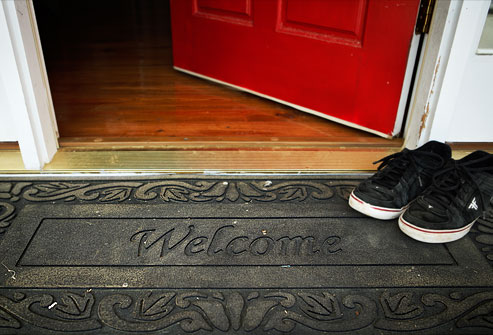So
I pooped out on the blog last week, but I wanted you to know I had a good
reason. I have spent the better part of
the last 2 weeks completing my Anusara Certification Exam (yes, I am already a
several-times certified teacher, and have been "Anusara-Inspired" for
the last 8 years, but this is the FULL certification). It took me about
30 hours to complete and in the end was 72 pages of simple, black and white
answers to questions about anatomy, translations of Sanskrit words, and
explaining alignment principles, as well as many long, interpretive answers to
questions about yoga and Tantra philosophy, application of yoga therapeutics, and
my own thoughts and ideas about all aspects of yoga practice, as well as other topics.
Although
it was very intense and intensive, it was an amazing process - really, a
culmination of the last 10 years of my life in many regards, and it was
energizing and exhilarating! I found that I was full of energy all week
from immersing myself so deeply in spiritual study and thought. In
Patanjali's Yoga Sutras he lays out an eightfold path of yoga practice.
The first two steps on this path are practicing the yamas and niyamas,
which some people call the "10 commandments" of yoga. One of the niyamas
is a practice called svadhyaya, which means self-study, or study of
sacred texts, and that's exactly what this Certification process has been for
me.
Now
let's be clear – the inner voice of svadhyaya is not the one that says,
"Holy crap, you idiot why did you say THAT?" or "Man, that pose
sucked!" or even "Hey, I had the best handstand in the class."
It is the open, non-judgmental witness that simply observes. It is
the voice of reflection that sees through the surface of things to what is
really going on. Then the discerning mind can make choices based on what you’ve
seen to move you more in the direction of shree - all that is life-enhancing and beautiful. When we look at
ourselves with svadhyaya, we look with compassionate awareness at the
full picture of our lives and can lean into that life more deeply, and live more joyfully and fully.

Most
of us spend our lives creating and maintaining an image of ourselves, actually
probably more than one: a public self-image, an intimate self-image shared only
with those closest to us, and a private self-image. If we are willing to
look at patterns, behaviors and strategies we habitually use to maintain that persona,
we can use svadhyaya to pierce through the veil that this self-image
creates, and we see through to the true nature of our own essential being. We
see into the motivations that cause those patterns and behaviors. We can
use svadhayaya to skillfully step back, and with self-love and compassion
examine those aspects of our lives that aren't serving us anymore.
Another
part of the Anusara Certification process is to make a video of a class I've
taught and fill out an 8-page self-assessment form. This is the harder
part of the process for me. Having to watch yourself on video is so
painful at first. I was so intimidated
by the process that I eased myself into it by just audio recording a few
classes first and listening to them, just to get over the sound of my voice and
to stop cringing at every other word out of my mouth. I avoided watching my first video for almost
2 weeks before I could bring myself to do it. But if you can come at it
with compassion for yourself there is SO much to be learned. Once you get
over the initial self-conscious squinting through parted fingers, this process
is nothing less than transformative. When I was a performing musician I
would tape record (remember tape recorders?!) all my practice sessions
leading up to a performance. Nine times out of ten I would listen and think,
for better or for worse, "Wow, that is not what I thought was going on
there!" This experience was similar, and just as those tapes were
invaluable additions to my performances, the practice of svadhyaya is an
invaluable window into why we do what we do. Often, we are not even aware
of what we are doing.
So
first, take time to become aware. Close your eyes and take 10 deep
breaths so that the constant chattering voice of multi-tasking that we have all
become immune to because of it's imminent presence in our minds quiets down.
And then invoke self-compassion. It's so important to start from
there or else the whole process can feel shaming and punitive and that
definitely does not move us in the direction of shree. Which is
not to say it will be easy, but honesty rarely is. See your self as your
dog sees you....or your mom....or spouse, and then just be open to what is
revealed. Look with open, honest and loving eyes and allow yourself to be
transformed.

Off
the mat: Other than practicing
compassionate awareness in our yoga practice and in our lives, one of the ways
we can move down the path of svadhyaya is to enlist the help of those
close to us. I’ve been reading Max Strom’s book A Life Worth Breathing,
and in it he suggests this exercise. (I am giving a brief outline here – if
this is of interest to you, I highly suggest you get the book and do the full
exercise – or contact me at RDYogamama@gmail.com
and I will send you the full version)
Choose
four or five people you really trust and respect, and who trust and respect you
(hint – those who you are in emotionally charged relationship with are not
good candidates). Make an appointment
with each one separately to meet private with the goal of critiquing
you.
First,
ask each person what your strengths are, your talents and gifts. It is
important to start here! Then ask them to offer suggestions about what might be
improved, where there are weaknesses or blind spots. Listen to the answers without responding,
reacting, interrupting, disagreeing, explaining, or becoming defensive, however
challenging it might be. If you can,
record the conversation or at least bring a notebook to jot down some
thoughts. You will see some patterns
emerge and this will help you to practice svadhyaya. As Mr. Strom says “This exercise illuminates
you, holds a lamp up to your face and says this is who you are, who you have
been. With this new knowledge you can finally learn what direction to walk in –
and when you walk forward with true knowledge of your strengths and weaknesses,
you will not fail.”
On
the mat: Start your practice by cultivating
self-compassion and self-love – awaken your inner witness. In my classes this week we are focusing on
plugging the head of the arm bones back, integrating them into the shoulder
sockets to plug into self-awareness.
Throughout your practice be mindfully aware and make alignment
adjustments on a moment by moment basis, based on your observation of what is
actually happening, not on what usually happens.
Open
to Grace: Breathe in and open to the lessons you have to teach yourself.
Soften
and open to the lessons from ancient traditions and holy scriptures.
As
you breathe deeply, fill yourself up with self-knowledge and self-reflection.
Muscular
Energy: Firm the muscles to the bones and embrace self-awareness and learning
and growth.
Draw
from the skin to the muscles to the bones and all the way into place inside
yourself where the inner teacher resides.
Shoulder
Loop: Draw the head of the arm bones back to plug into self-compassion.
As
the head of the arm bone engages into the shoulder socket, engage with
compassionate self-awareness.
Inner
Spiral: Widen your sit-bones to widen your awareness of yourself.
Outer
Spiral: Scoop your tailbone down into self-love and self-awareness.
Organic
Energy: Shine the light of your truth out.
Let
self-compassion and self- love radiate from the inside out.












